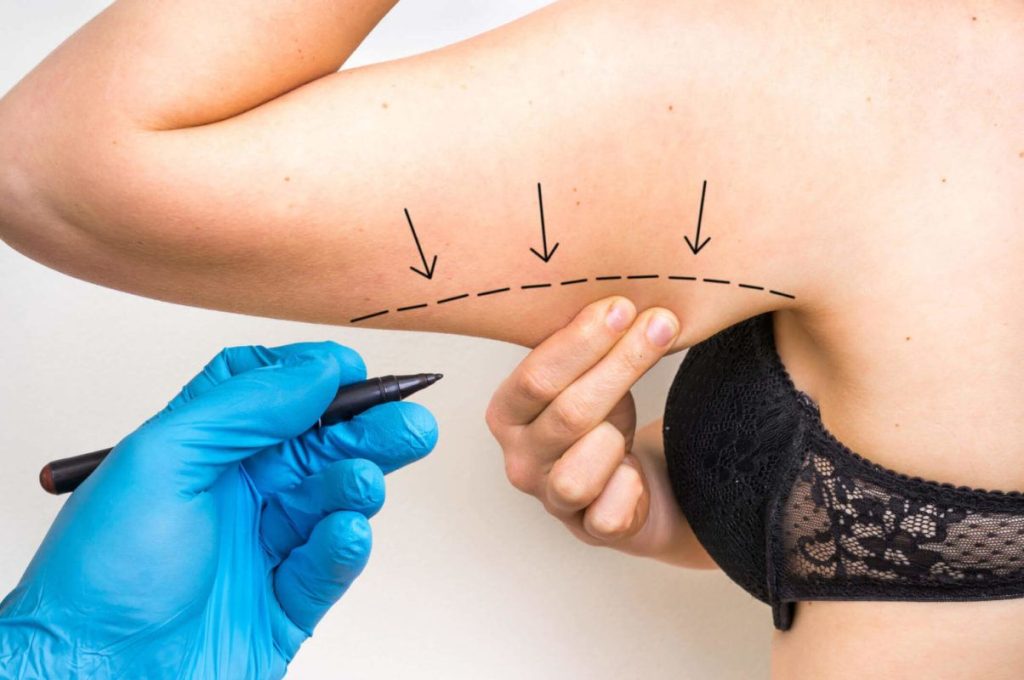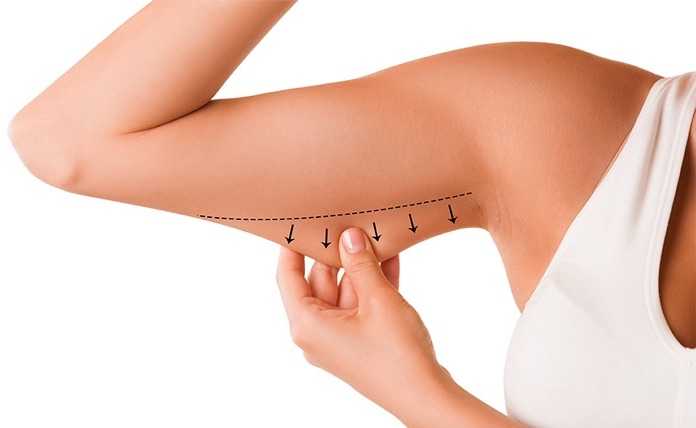Arm liposuction emerges as a sought-after procedure for those aiming to sculpt and redefine their upper limb contours. This surgical intervention strips away stubborn fat deposits, offering a more toned appearance when diet and exercise fall short. It’s crucial to understand the intricacies of this cosmetic solution, including potential outcomes and safety considerations. By delving into arm liposuction, individuals can make informed decisions about enhancing their body image with medical precision.
Understanding Arm Liposuction Pain Levels
Pain Intensity
Arm liposuction is not without discomfort. Most patients report mild to moderate pain following the procedure. This discomfort can be likened to the soreness felt after a vigorous workout.
The sensation varies from person to person. Some may feel only slight tenderness, while others experience more pronounced discomfort. It’s important for patients to communicate with their surgeon about any concerns regarding pain management.
Anesthesia Effects
During arm liposuction, doctors use local anesthesia. This helps in significantly reducing pain at the time of surgery. Patients usually stay awake but will not feel any sharp pains as the fat is removed.
Post-surgery, it’s normal for the arms to feel numb as the anesthesia wears off gradually. The medical team will provide guidelines on how to manage any subsequent pain, which might include over-the-counter medication or prescribed painkillers.
Factors Influencing Pain During Arm Liposuction
Surgical Technique
The method a surgeon uses is key. Advanced techniques often lead to less pain. For example, tumescent liposuction involves injecting a solution that can minimize discomfort.
Less invasive methods mean quicker recovery times. Patients usually experience less swelling and bruising with these techniques. This results in lower levels of pain during the healing process.
Body Response
Every patient’s body reacts differently to surgery. Some may find their arm liposuction surprisingly easy to handle, while others might face more challenges.
Factors like age and overall health play roles here. Younger patients often bounce back faster than older ones do. A strong immune system also helps reduce swelling and discomfort after surgery.
Pre-Existing Conditions
Health issues before surgery can affect pain perception post-op. People with sensitive skin or chronic conditions may feel more pain than those without such concerns.
Managing these conditions beforehand is crucial for a smoother recovery period. It’s important for patients to discuss any sensitivity or health problems with their surgeon prior to undergoing arm liposuction.
Recovery Timeline and Best Practices
Normal Activities
After arm liposuction, most patients return to their routine within days. The exact recovery time varies from person to person. Some may feel ready after a few days, while others need weeks.
Patients should follow their surgeon’s advice for the best healing journey. This includes taking enough rest and gradually resuming activities. It is important not to rush this process as it can affect the final results.
Post-Op Care
Following post-operative instructions is key for a smooth healing process. These guidelines help reduce risks and potential complications after the operation.
The care plan often involves wearing compression garments and managing pain with prescribed medication. Patients should avoid strenuous exercise until cleared by their doctor.
Follow-Up Appointments
Regular check-ups are essential during recovery. They allow doctors to monitor healing progress and address any concerns quickly.
During these appointments, patients can ask questions about what they experience at home. Doctors might adjust care recommendations based on how well areas treated by liposuction are healing.
Pain Management Strategies Post-Procedure
Medication Use
After arm liposuction, patients often find relief with over-the-counter pain medications. These are usually enough to handle discomfort. It is important to follow the doctor’s advice on which medicine to take.
Doctors typically recommend medicines that reduce pain and swelling. Remember not to exceed the suggested dosage. Taking too much can cause other health issues.
Cold Therapy
Applying ice packs is a simple way to lessen swelling and pain. Do this several times a day but not directly on the skin. Wrap the ice in cloth first.
Ice helps numb sore areas around treated arms, reducing inflammation quickly. This method should be used especially during the first few days post-surgery.
Activity Level
Keeping activity low is crucial after an invasive procedure like arm liposuction. Avoid heavy lifting or vigorous exercise for some time as advised by your doctor.
Staying away from strenuous activities helps prevent increased pain and potential complications with recovery. Gentle movements can help reduce stiffness without straining healing tissues.
Comparing Arm Liposuction with Other Fat Removal Options
Targeted Removal
Arm liposuction excels in removing excess fat from the upper arms. This procedure is more precise than non-invasive methods. These methods can reduce fat but may not be as effective for concentrated areas.

Lipo uses small incisions to target and remove stubborn fat cells. It’s ideal for those who struggle with arm fat despite diet and exercise. Unlike general weight loss, lipo focuses on specific regions.
Quick Recovery
Recovery time after arm lipo is an advantage over traditional surgery. Patients often return to normal activities faster than with invasive surgeries that require extensive healing.
Patients should avoid heavy lifting initially post-lipo. But many resume daily tasks within days, not weeks like other surgeries might demand.
Minimal Scarring
Scars are a common concern with cosmetic surgery. However, arm liposuction tends to leave less noticeable scars compared to other surgical options.
The procedure involves tiny incisions hidden in natural creases of the skin or near the elbow where they’re less visible. As a result, scarring is minimal and often fades significantly over time.
Longevity of Arm Liposuction Results
Diet and Exercise
Maintaining a healthy lifestyle is crucial after arm liposuction. Proper diet and regular exercise are vital. They keep the fat cells from expanding again. Patients who stick to a balanced diet avoid weight gain. This helps preserve their new, slimmer arm contours.
Regular physical activity tones the arms further. It also improves overall health. Examples include swimming or lifting weights for arm strength.
Weight Fluctuations
Post-liposuction, weight changes can alter results significantly. Gaining pounds may lead to new fat deposits in different body areas, sometimes even the arms again.
Losing too much weight isn’t ideal either. It might leave loose skin where the fat was removed.
Aging Effects
Over time, our skin loses elasticity due to aging—this impacts how long liposuction results last on your arms.
As we age, even if you maintain your post-lipo figure, changes in skin texture may occur naturally.
Postoperative Care and Compression Sleeve Usage
Compression Garments
Compression sleeves play a pivotal role after arm liposuction. They are key in reducing swelling and aiding the arms to shape properly. Wearing these garments can also help minimize bruising.
Immediately following surgery, patients will notice their surgeon has fitted them with a compression garment. This is not just for comfort; it’s an essential part of recovery. The consistent pressure helps prevent fluid build-up and facilitates better contouring as the skin adheres to new contours.
Wound Management
Proper care of the incision site is critical for preventing infection. It ensures smoother healing too. Patients must follow their surgeon’s instructions carefully to avoid complications.
After arm liposuction, keeping incisions clean is paramount. Surgeons provide specific guidance on how to manage these sites, often including gentle cleaning and application of prescribed ointments or bandages. Ignoring this advice can lead to increased risk of scarring or worse—complications that could affect overall health.
Lymphatic Massage
Lymphatic drainage massages are recommended post-liposuction procedures. These massages support faster recovery by enhancing circulation and collagen production within treated areas.
Patients should adhere strictly to massage schedules set by their healthcare provider or therapist.
-
Encourages efficient healing
-
Reduces chances of irregularities forming under the skin
These massages are usually gentle but effective in moving lymph fluids that might accumulate after surgery, thus decreasing swelling more quickly than without such interventions.
Financing Options for Arm Liposuction Procedures
Payment Plans
Clinics often provide payment plans. These allow patients to spread the cost over time. Some clinics partner with third-party creditors. This can make the procedure more accessible.
Patients should ask about payment options during consultations. It’s important to understand any interest or fees involved. This way, they can manage their finances better.
Health Savings
Using a health savings account (HSA) could be an option. HSAs are designed for medical expenses and may cover parts of arm liposuction costs.
To use an HSA, check if arm liposuction qualifies under your plan’s rules. Sometimes, certain criteria must be met for a procedure to be eligible.
Cost Comparison
Shopping around is wise before committing to surgery.
-
Compare prices among different providers.
-
Review each clinic’s services and reputation.
Summary
Arm liposuction stands as a significant procedure for those seeking to refine their body contour and enhance self-image. This article has dissected the pain levels, recovery processes, and the longevity of results, providing a comprehensive understanding of what patients can expect. We’ve explored pain management, postoperative care, and even financial considerations, ensuring readers are well-informed about this transformative journey. The synthesis of these elements underscores the importance of realistic expectations and diligent follow-through with aftercare instructions to maximize the positive outcomes of arm liposuction.
For individuals contemplating arm liposuction, it is crucial to consult with qualified professionals who can offer personalized advice tailored to your unique circumstances. Take that next step towards achieving your aesthetic goals—reach out to a certified plastic surgeon today to discuss your options and embark on a path to renewed confidence and well-being.
Frequently Asked Questions
How painful is arm liposuction?
Arm liposuction typically involves minimal to moderate pain, influenced by the technique used and individual pain thresholds.
What factors affect pain levels during arm liposuction?
Pain during arm liposuction can be affected by the patient’s tolerance, the extent of fat removal, and anesthesia type.
What is the recovery timeline for arm liposuction?
Recovery from arm liposuction usually takes a few days to weeks, with most patients resuming normal activities within 2-3 days.
Are there effective pain management strategies after arm liposuction?
Yes, post-procedure pain can be managed with prescribed medications and careful adherence to postoperative instructions.
How does arm liposuction compare to other fat removal methods in terms of invasiveness?
Arm liposuction is less invasive than traditional surgical options but more so compared to non-surgical treatments like cryolipolysis.
How long do results from arm liposcopy last?
Results are potentially long-lasting if a stable weight is maintained post-procedure.
Is special care required after undergoing an arm lipo procedure?
Postoperative care includes wearing compression sleeves and following your surgeon’s guidelines for optimal healing.




